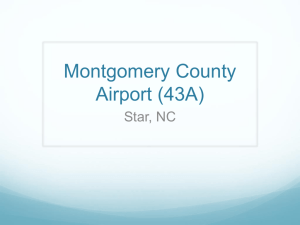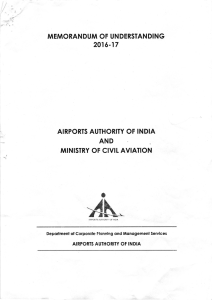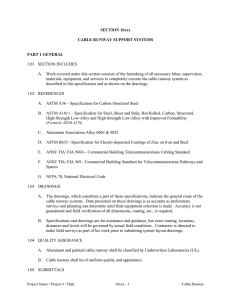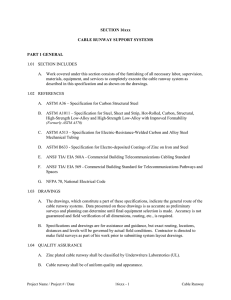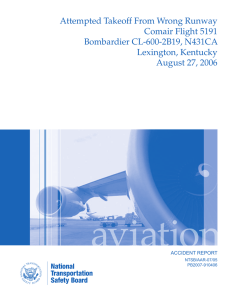Question
advertisement
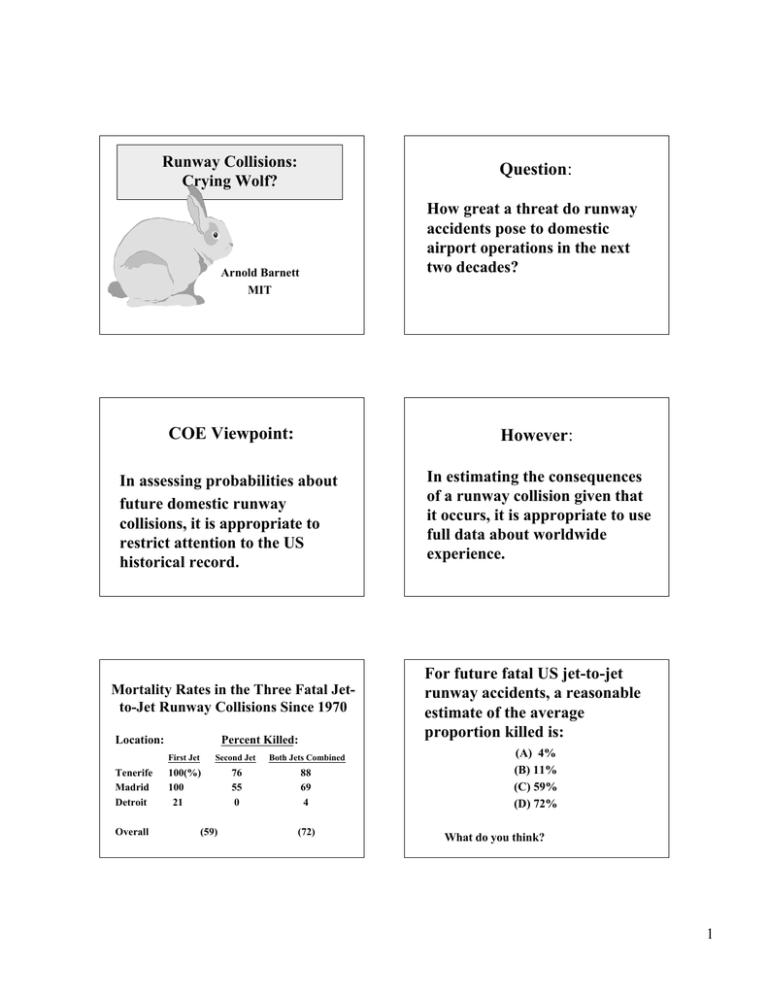
Runway Collisions: Crying Wolf? Question: How great a threat do runway accidents pose to domestic airport operations in the next two decades? Arnold Barnett MIT COE Viewpoint: However: In assessing probabilities about future domestic runway collisions, it is appropriate to restrict attention to the US historical record. In estimating the consequences of a runway collision given that it occurs, it is appropriate to use full data about worldwide experience. Mortality Rates in the Three Fatal Jetto-Jet Runway Collisions Since 1970 Location: Tenerife Madrid Detroit Overall Percent Killed: First Jet Second Jet Both Jets Combined 100(%) 100 21 76 55 0 88 69 4 (59) (72) For future fatal US jet-to-jet runway accidents, a reasonable estimate of the average proportion killed is: (A) 4% (B) 11% (C) 59% (D) 72% What do you think? 1 If there are N aircraft operations at a given airport in a given year, then: Why? 1) The number of flights that could (theoretically) collide is (N2-N)/2. 2) The Quadratic Model is conceptually attractive. 3) N2 is widely used in airspace collisionrisk models. To a first approximation, one might expect that the risk of a runway accident would vary with N2. But, to the extent possible, it is desirable to go beyond merely stating conjectures, and to test hypotheses and “approximations” against empirical evidence. A most interesting data set The 42 US runway incursions in 1997 that: (1) were judged by experts to have “extremely high” accent potential and (2) took place under known conditions of reduced visibility (night, sunrise/sunset). The N2-hypothesis passed a Chisquared test with flying colors. (The test was based on the spread of the 42 dangerous events across US airports.) 2 Interestingly, the hypotheses that dangerous events varied across airports with either N or N3 did not pass Chi-squared tests. Airport Weather-Risk Factor F: F = 1 + 11*Q Where Q = fraction of time haze/fog prevails at the airport When Q = 0, F = 1; when Q = 1, F = 12. When Q = 0.1, F = 2.2 Weather: On a per-hour basis, haze and fog increase the risk of a runway accident by roughly a factor of 12. Final Answer? (Well, first approximation) • At towered US airports over the next two decades, we might expect something like 33 runway accidents, 5 of them jet-to-jet. (We are assuming recent accident patterns and projected air-traffic growth). • The average death rate would be 59% in the jet-to-jet accidents and 27% in the others. In other words: No one is crying wolf. The wolf is on the runway. 3

